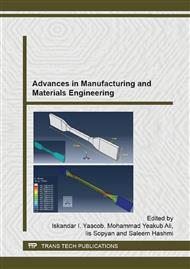p.513
p.517
p.523
p.527
p.531
p.535
p.539
p.543
p.549
Transfer Function Prediction of a Lithium Iron Phosphate Battery with Nature-Inspired Approach
Abstract:
It is well known that the main constraint of electric vehicles (EVs) is the capabilities to supply efficient energy for driving-range that is comparable to petrol fueled vehicles. Moreover, a large number of batteries needed for EV contribute to heavy weight, poor durability and pricy total cost. In view of that, the need to prolong the battery lifetime, and use its full capacity, is of utmost importance. Therefore, an accurate battery model is a challenging first step to the overall problem soving chain. This paper presents a transfer function model prediction with nature-inspired approach for a Lithium iron phosphate battery. An Ant Colony Optimisation technique is used in search for accurate model with robust capability to adapt with different input current based on the New European Driving Cycle (NEDC) range. The model is further validated with autocorrelation and cross-correlation test and it is proven to give an error tolerance between the 95% confidence limit.
Info:
Periodical:
Pages:
531-534
Citation:
Online since:
July 2015
Authors:
Price:
Сopyright:
© 2015 Trans Tech Publications Ltd. All Rights Reserved
Share:
Citation:


